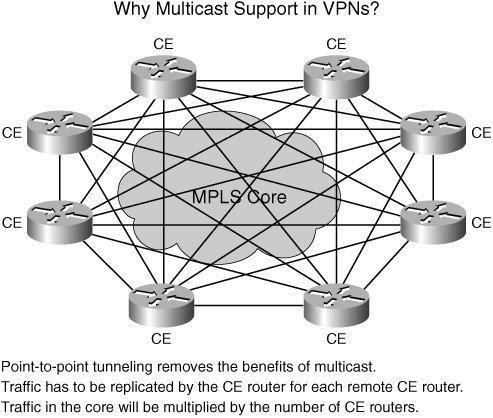MPLS and Next-Generation Networks: Foundations for NGN and Enterprise Virtualization
| The basic service provided by a multicast VPN (MVPN) is permitting an enterprise to transparently interconnect its private network across a service provider's network backbone. The use of an MVPN to interconnect an enterprise network in no way affects how an enterprise network is administered, nor does it change enterprise connectivity with the rest of the world. It is an artifact of MVPN service that the enterprise network is not visible in the backbone. As a result, private address administration in the enterprise is unaffected, and MVPNs do not alter the existing requirements for communication between private and public addresses. Until recently, only unicast constructs had been supported in MPLS VPN. However, VPN customers now require multicast connectivity because applications such as videostreaming need multicast and service providers do want to offer these value-added services to such customers. Without MVPN, the workaround has been to use point-to-point generic routing encapsulation (GRE) tunnels from CE to CE. Such an implementation, however, ultimately is not scalable due to traffic and administrative overhead. In addition, such an implementation can be linked to similar Layer 2 VPN scalability issues, such as (N*(N-1))/2), as was discussed earlier in the book. Excessive replication of traffic from a local CE to a remote CE does not provide for efficiency of data flow for the transit of multicast applications across the core, as shown in Figure 10-2. Figure 10-2. Why Multicast Support in VPNs?
What are the challenges? Core provider (P) routers should have no knowledge of VPN customer source addresses; this lack of knowledge allows the VPN customer group (and source) address spaces to overlap to provide optimal traffic forwarding in the core. For multicast traffic, this generally implies the use of multicast protocols in the core. Furthermore, core stability must be ensured because multicast applications are sensitive to error conditionshence, the requirement for MVPN to address these challenges. |
